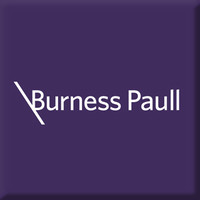Julie Greig: Your guide to virtual court hearings – what you need to know

Julie Greig
Julie Greig gives her top tips for virtual court hearings.
I was recently involved in an evidential hearing in the Commercial Court of the Court of Session, which was set down over eight days and took place by WebEx.
I had previously been involved in a Sheriff Court proof (pre-Covid) involving a number of witnesses giving their evidence (internationally) via video-link.
That experience gave me some idea of what to expect, and what some of the challenges virtual court hearings might pose (documents, cross-examination, technology issues etc).
It is fair to say that in the preparatory and initial stages I suffered considerable anxiety. Worries while waiting on video links included whether or not my witnesses would join on time, and of being able to share documents electronically with ease during questioning.
However, I am pleased to say that in terms of technology and the practical aspects, all ran relatively smoothly (if you miss out my momentary power cut and the sometimes ‘lethargic’ joint bundle).
As is always the case for any hearing, preparation is key. But now more than ever, agents, counsel, courts AND your opponents need to work together to ensure the smooth running of an entirely electronic hearing.
For anyone involved in a virtual hearing, here are my top tips for its smooth running:
How to prepare for a virtual court hearing
1. Read the guidance on the Scottish Courts website
There’s lots of it, both from a technical perspective and from an organisational perspective (e.g. the court needs a note of all email addresses for those attending or participating). There are helpful resources for agents, counsel and witnesses.
2. Joint Bundle / Documents to be referred to during the hearing
It needs to work properly and should be carefully checked to make sure that all documents are legible (the viewing window makes documents appear smaller). Needs to be properly paginated (so that the page numbers of the PDF reflect the page number on the bundle). It is helpful if everyone refers to the Joint Bundle in the same way (i.e. using the page numbers). Spreadsheets and other native documents may require to be produced separately (check the court knows where to find them and that they open properly).
3. Sharing of documents
Avoid sharing your entire screen (inadvertent sharing of other unrelated (and likely confidential) information with the court is a big NO). Open all documents you may need to refer to and share only those documents.
4. Arrange a practice session
Work with the clerk to arrange a practice session with agents, counsel and all witnesses (including any experts).
Ensure witnesses can access the platform and provide the opportunity for agents / the clerk to explain what they can expect when they log on. Give agents the opportunity to advise on the correction of any odd camera angles, poor microphones etc.
5. Witnesses
Ensure witnesses appreciate that a virtual hearing is to be treated with the same gravitas as the real thing. With many of us WFH for the last eight months or so, it is a big ask for a witness to, in effect, turn their lounge, kitchen, dining room, bedroom or garage into a virtual courtroom – offer practical guidance on how to dress, refer to the judge and / or clerk; refer to you; what to drink, or indeed, drink out of (“Beer Monster” glass – probably a no) etc. I found some comfort (and hope my witnesses did too) in explaining what was expected and what they could do to help to retain the degree of formality of standing in a witness box in a courtroom.
Provide them with the proof timetable, so at the outset, they have an idea of when they might be expected to log on.
6. Proof Timetable
I probably under-estimated the important of this at the outset. Previously a general guide, now, in the virtual world, a crucial planning tool - particularly in a lengthy hearing with multiple witnesses. Retain some flexibility for any technological issues.
Communicating during a virtual hearing
7. Agree methods of communication
With counsel, clients and witnesses in advance AND, importantly…
8. Set them up in advance
This avoids frantic scrambling around for mobile numbers when your witness has been called. I used Whatsapp to communicate with counsel; a Whatsapp group for communication as between myself, the client and counsel and a mixture of text and Whatsapp for witness. Send test messages in advance.
9. Keep Witnesses updated
Assuming the proof timetable remains accurate, keep in contact with your witnesses in terms of progress and to update them and provide forewarning of when they might be required.
10. Client
Again, I probably under-estimated the benefit a client gets from seeing the process first-hand, seeing and taking part in discussions in Parliament Hall and the daily de-brief.
Sitting, unseen or heard on a video-link can have the effect of making them feel distanced from the process, so checking in with them regularly helps mitigate that.
Finally, may I take this opportunity to thank Giles Reid from Ampersand Advocates for the fantastic support as counsel.
Also the Commercial Court Clerking team and the Court for their co-operation, and most of all, for their patience and understanding.
Without that, the whole experience (for agents, counsel and witnesses) would be significantly more challenging (and stressful!).

Julie Greig is a director at Burness Paull









